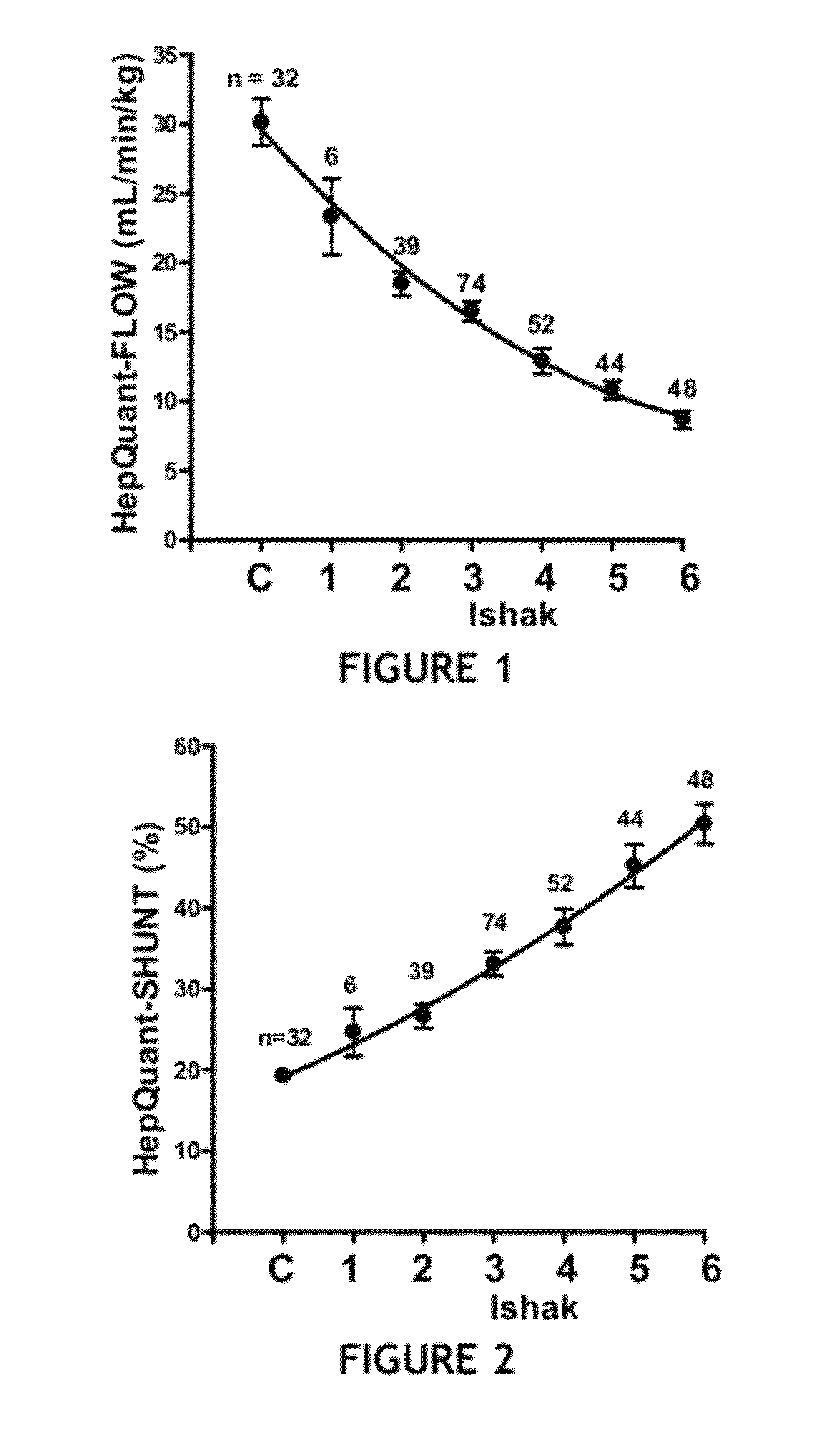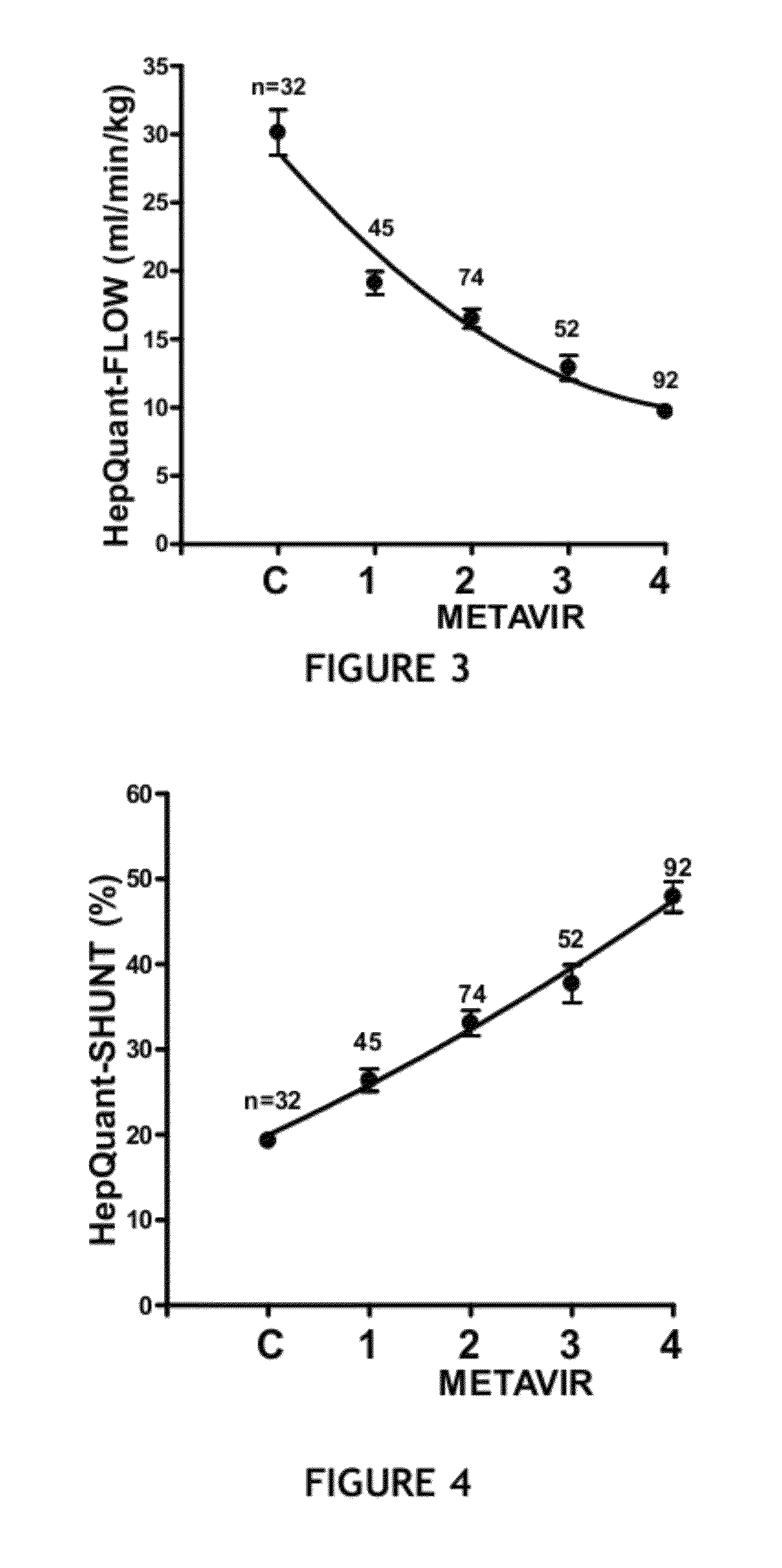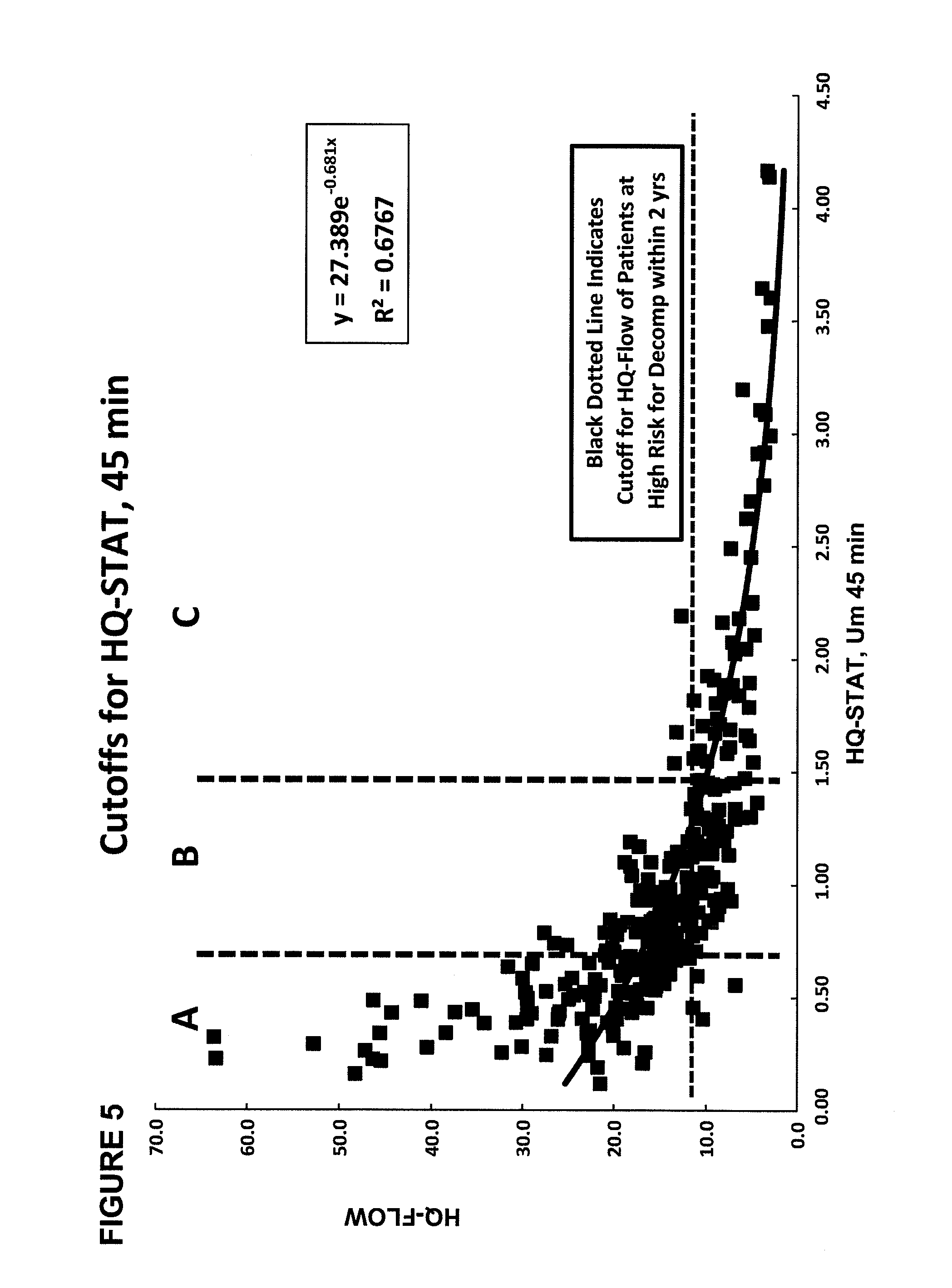Method for assessment of hepatic function and portal blood flow
a technology of portal blood flow and hepatic function, which is applied in the field of portal blood flow assessment and hepatic function assessment, can solve the problems of invasive hepatic venous pressure gradient (hvpg), inability to monitor the hepatic function and portal blood flow of patients with liver disease, and lack of gold standard for psc disease severity assessment,
- Summary
- Abstract
- Description
- Claims
- Application Information
AI Technical Summary
Benefits of technology
Problems solved by technology
Method used
Image
Examples
example 1
Estimating Portal Flow from a Single Blood Draw
[0146]The individual time point serum cholate concentrations from the FLOW and SHUNT tests in HALT-C and Early CHC studies were carefully analyzed and differences at 45, 60, and 90 minutes were found to be highly significant (p2=0.8) with the portal flow. An equation was derived that could transform the concentration (uM) at 60 min into an estimated portal flow (mL / min / kg) with 85% accuracy of the 5 point FLOW method. This led to the development of the STAT test, in which, in one embodiment, the patient drinks an oral dose of distinguishable cholate compound, e.g., deuterated-cholate, and gives a single blood sample after 1 hour. The accuracy of the STAT test relative to the FLOW test is shown in FIG. 8.
example 2
Efficacy of STAT (Estimated Portal Flow) in Detecting Hepatic Dysfunction
[0147]In the Early CHC study healthy controls had a portal flow of 34±14 ml / min / kg (mean±SD). Hepatic dysfunction was defined as a portal flow more than 1 SD below the control mean, a flow<20 ml / min / kg. In the early CHC group, about ½ the patients exhibited hepatic dysfunction. The estimated portal flows in the early CHC patients were calculated from the equation shown in FIG. 8 using their 60 min serum cholate level. The estimated flow could detect hepatic dysfunction with a sensitivity of 90%, a specificity of 85%, a positive predictive value (PPV) of 82%, and a negative predictive value (NPV) of 92%. These preliminary results demonstrate that a single blood sample after an oral cholate dose could be used to detect hepatic dysfunction in early stage CLD.
[0148]Furthermore, in the Early CHC study we analyzed the potential impact of STAT if used as a screening test. Currently adults are screened for liver diseas...
example 3
Procedure for Performance of an Exemplary STAT Test
Supplies
[0150]PO (Per Oral) Test Compounds:
[0151]2H4-Cholate ([2,2,4,4-2H]-Cholic Acid, 40 mg) (e.g. CDN Isotopes).
[0152]Sodium bicarbonate (e.g. 600 mg).
[0153]Patient Testing Supplies:
[0154]Serum / plasma transfer tubes and labels.
[0155]10 cc syringe for drawing blood sample.
[0156]7 cc red top and 7 cc gray top vacutainer tubes for serum sample collection.
[0157]Needle discard bucket
[0158]A drinking substance such as apple or grape juice for diluting oral test compounds.
Exemplary Test Compound Preparation
[0159]One exemplary solution of an oral composition may contain 2,2,4,4-2H-Cholate, and Sodium bicarbonate (e.g. 40 mg, and 600 mg, respectively). In one exemplary method, the day before the test, water can be added to about the 10 cc mark on a tube containing the oral test compounds to obtain the Oral Test Solution. Cap tube tightly and shake to mix. Swirl contents to get all the powder granules down into the water.
[0160]On the test ...
PUM
| Property | Measurement | Unit |
|---|---|---|
| time | aaaaa | aaaaa |
| clock time | aaaaa | aaaaa |
| volume | aaaaa | aaaaa |
Abstract
Description
Claims
Application Information
 Login to View More
Login to View More - R&D
- Intellectual Property
- Life Sciences
- Materials
- Tech Scout
- Unparalleled Data Quality
- Higher Quality Content
- 60% Fewer Hallucinations
Browse by: Latest US Patents, China's latest patents, Technical Efficacy Thesaurus, Application Domain, Technology Topic, Popular Technical Reports.
© 2025 PatSnap. All rights reserved.Legal|Privacy policy|Modern Slavery Act Transparency Statement|Sitemap|About US| Contact US: help@patsnap.com



